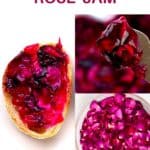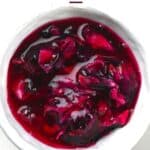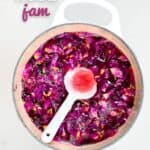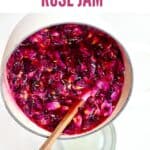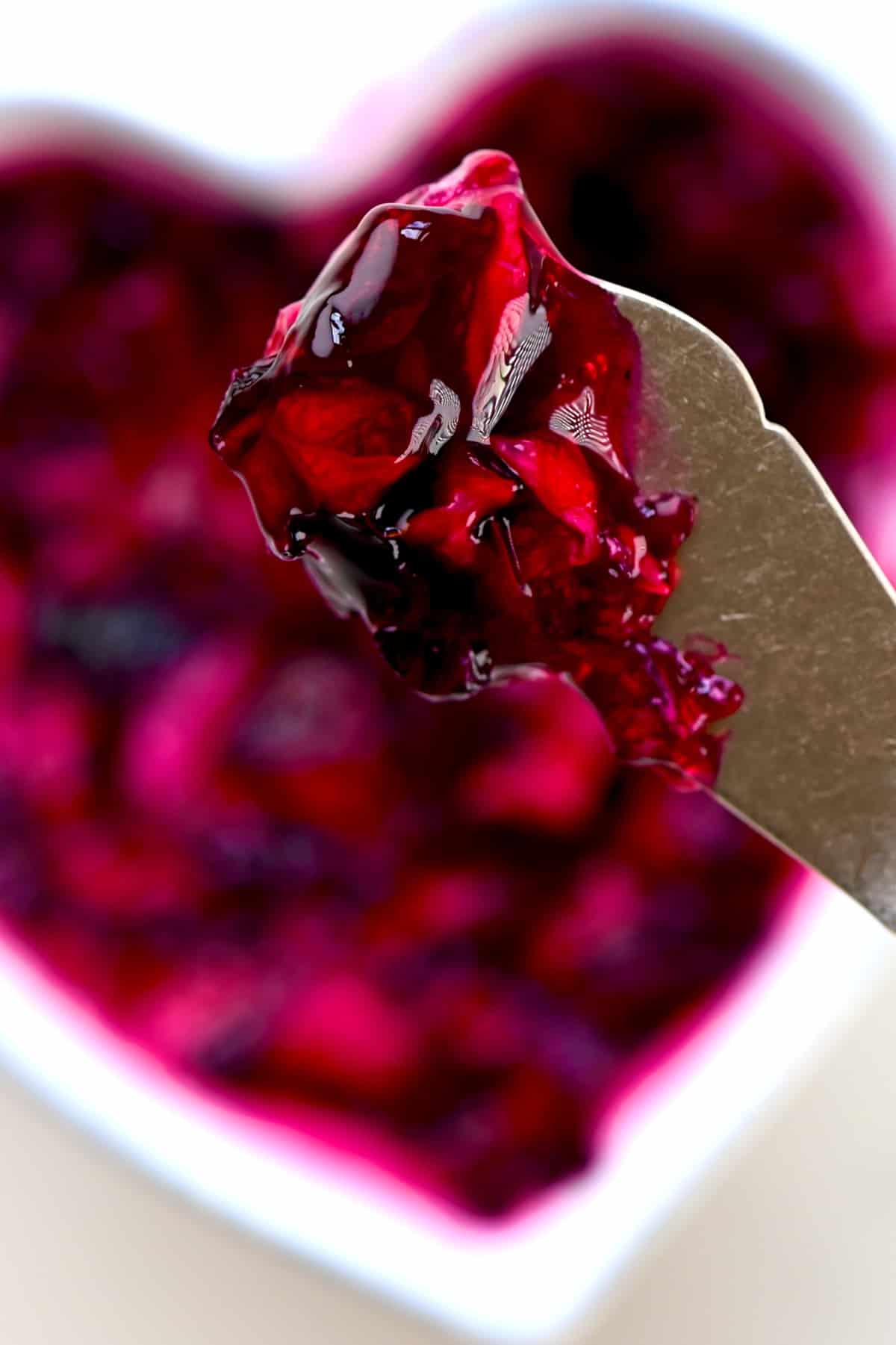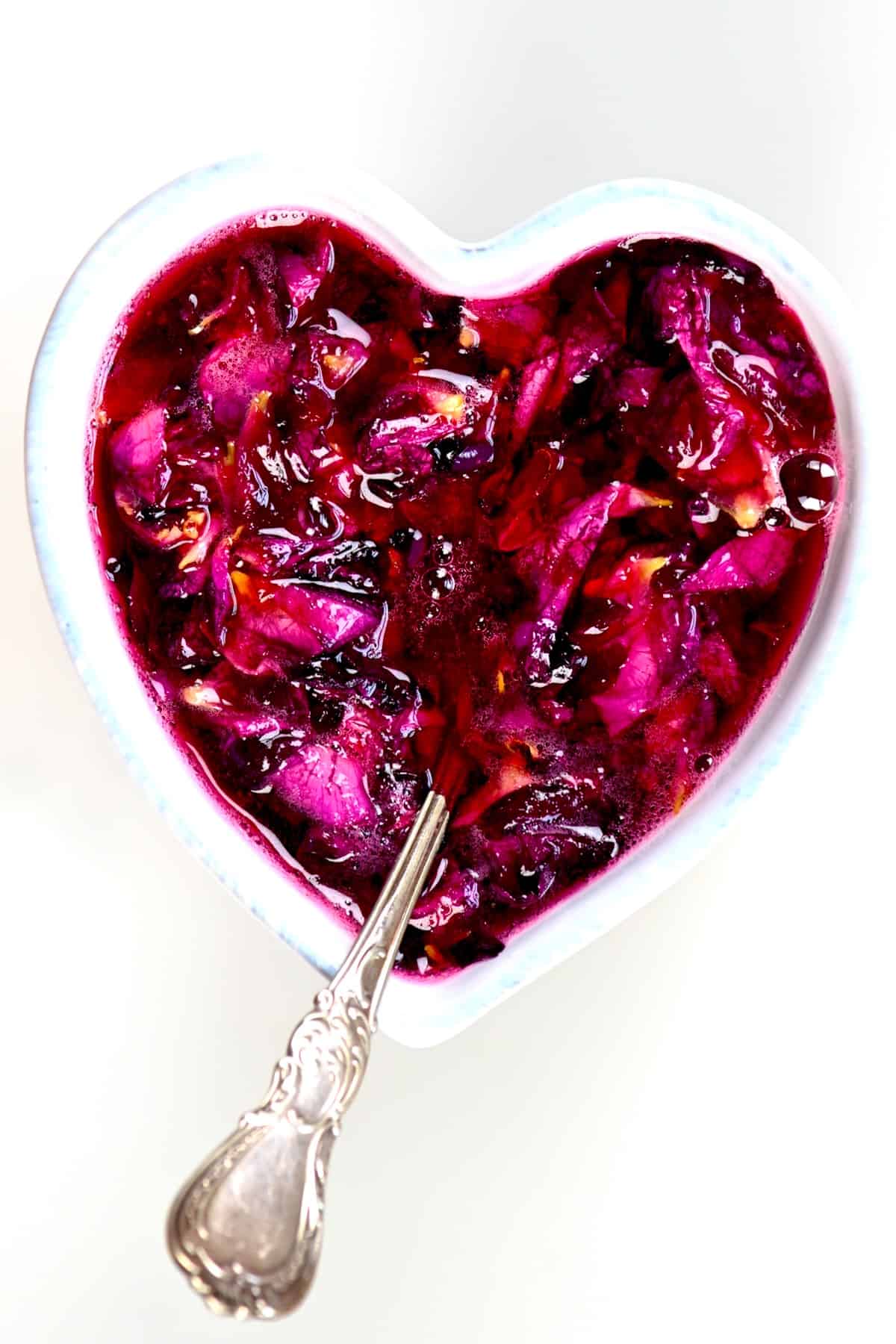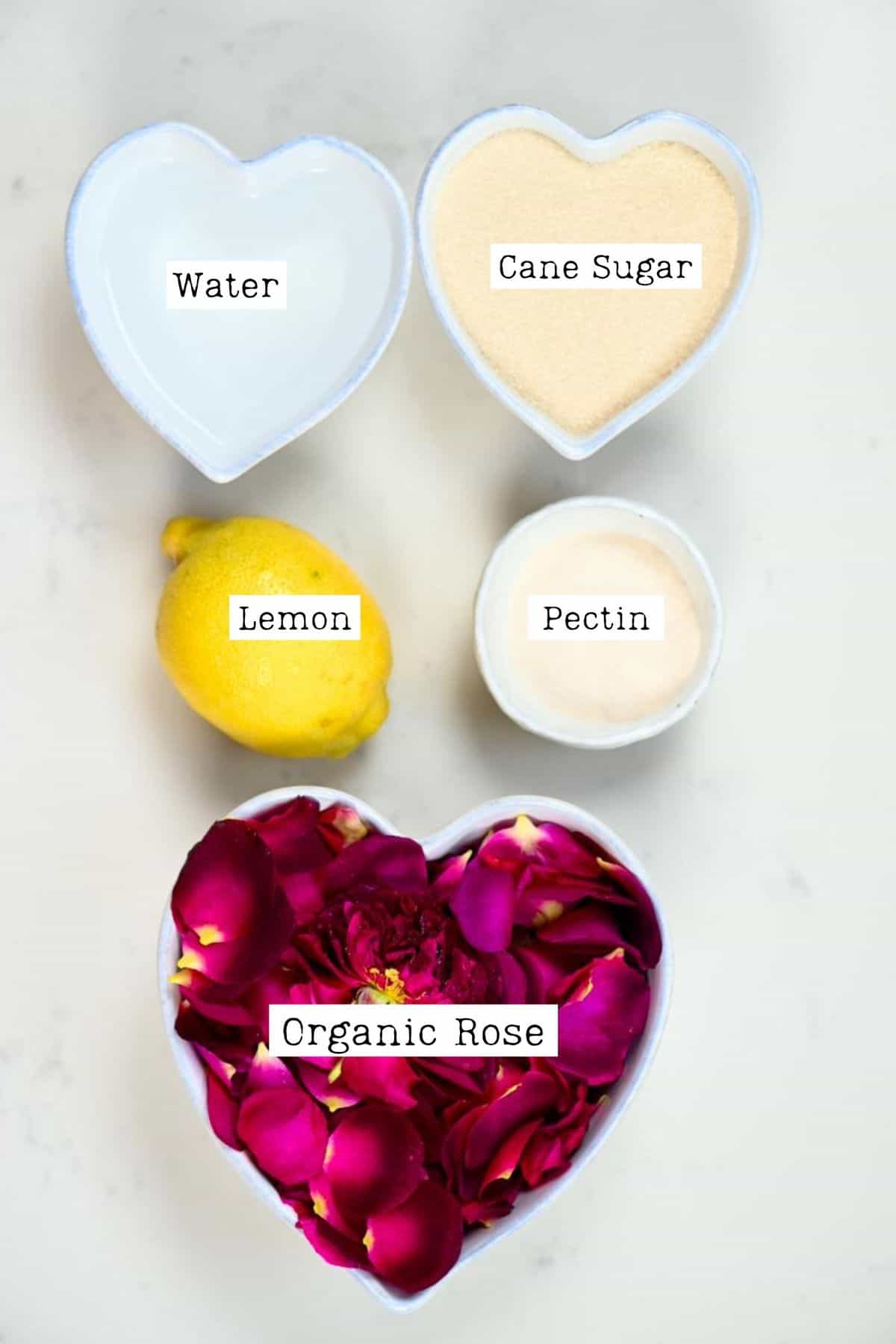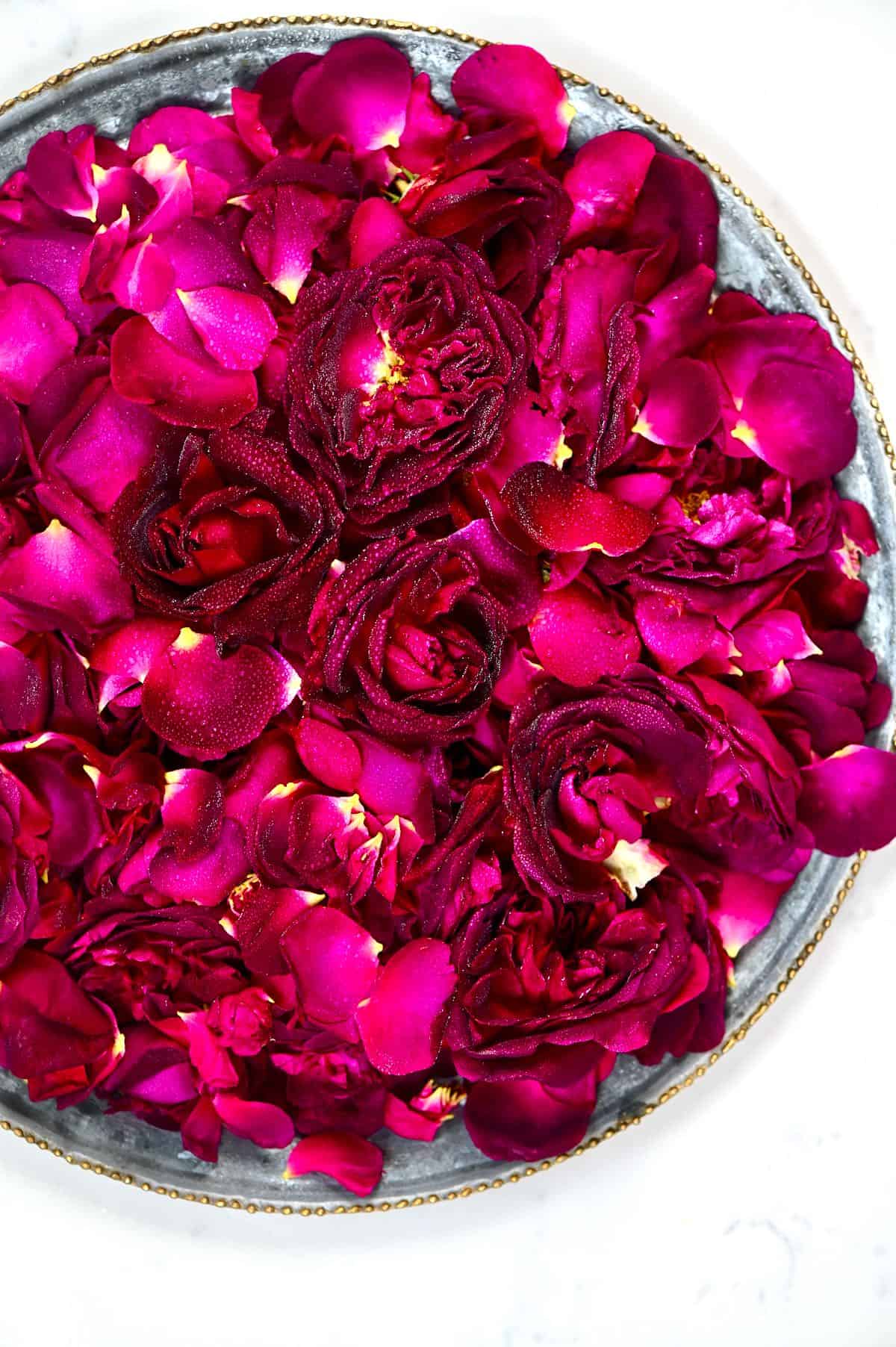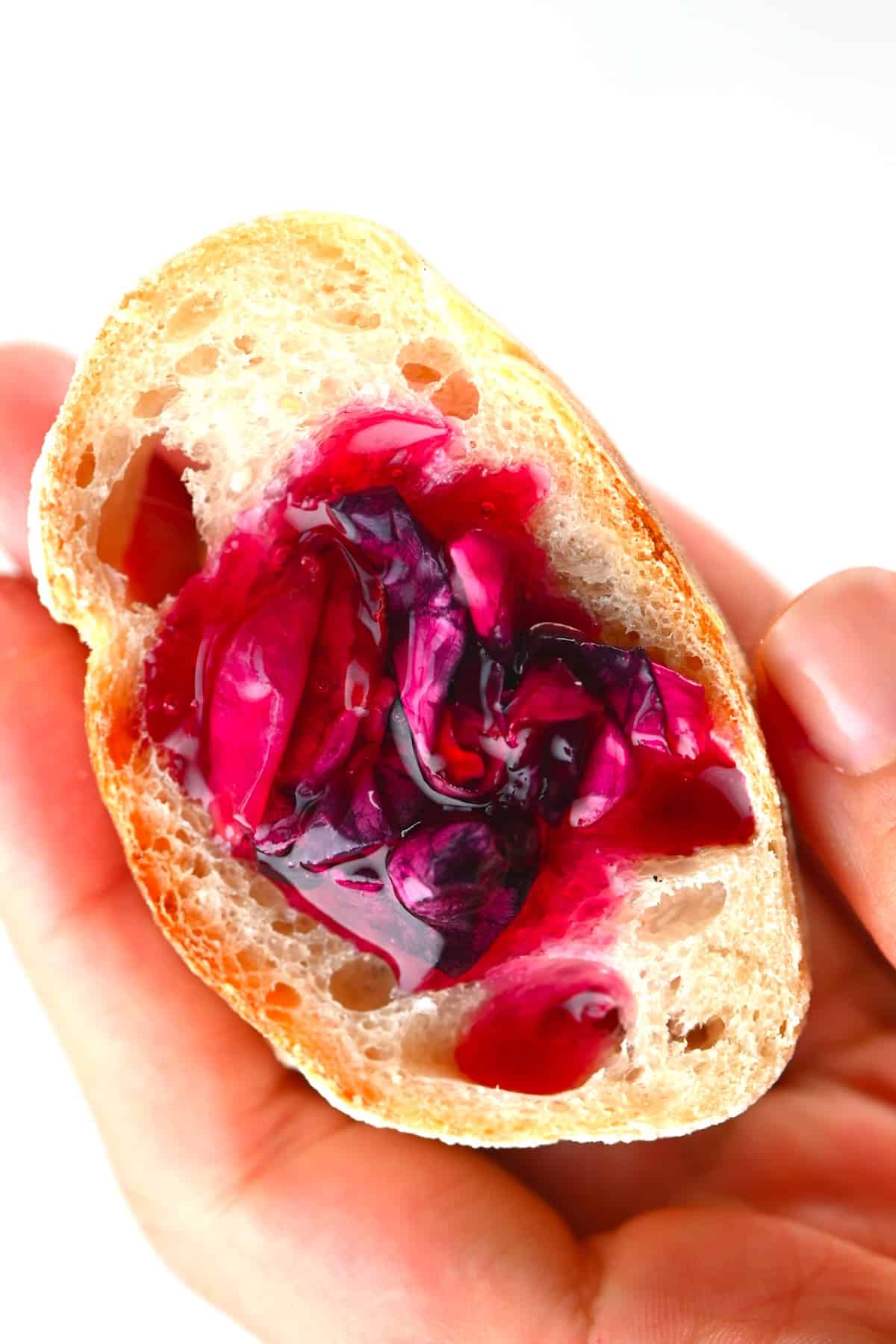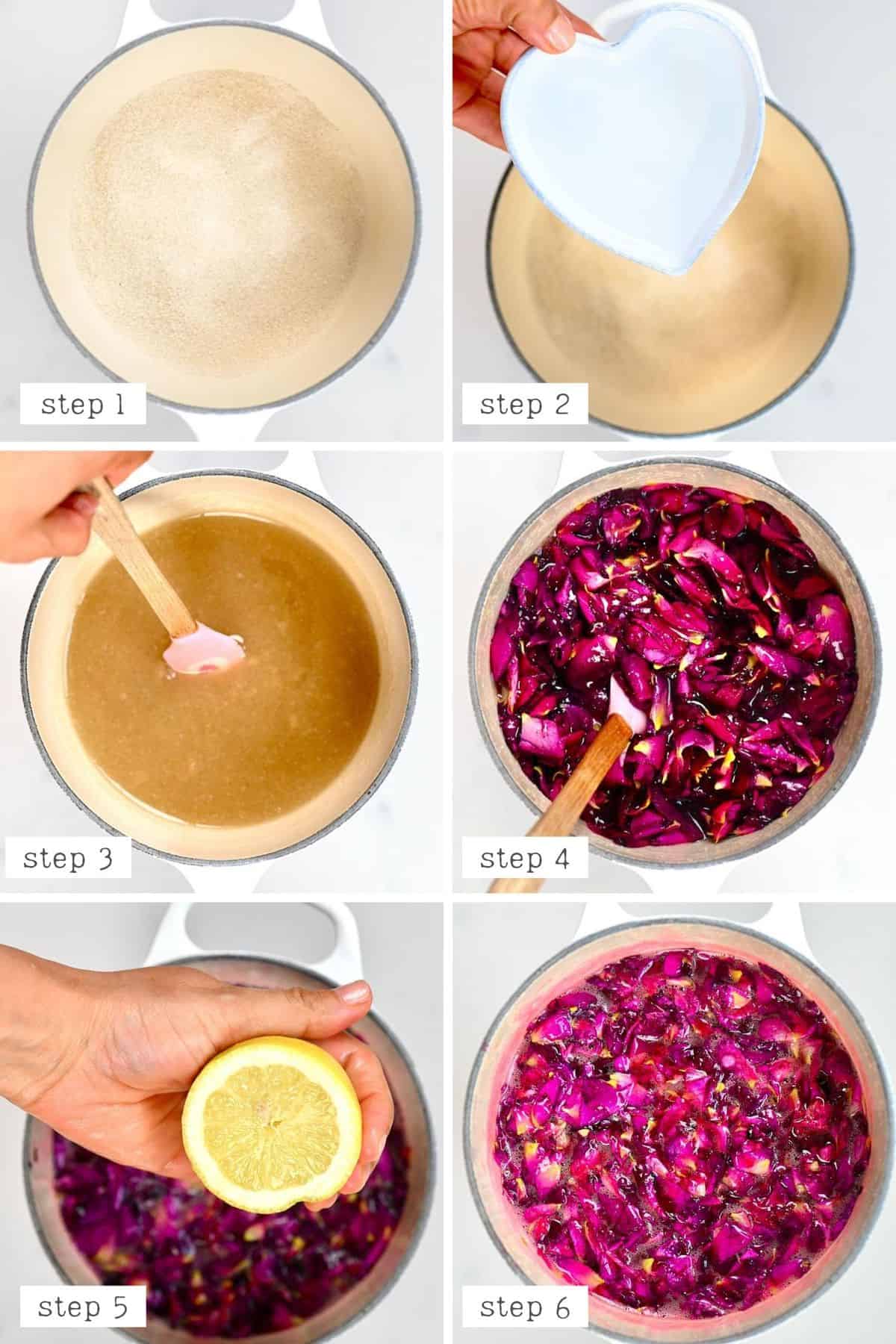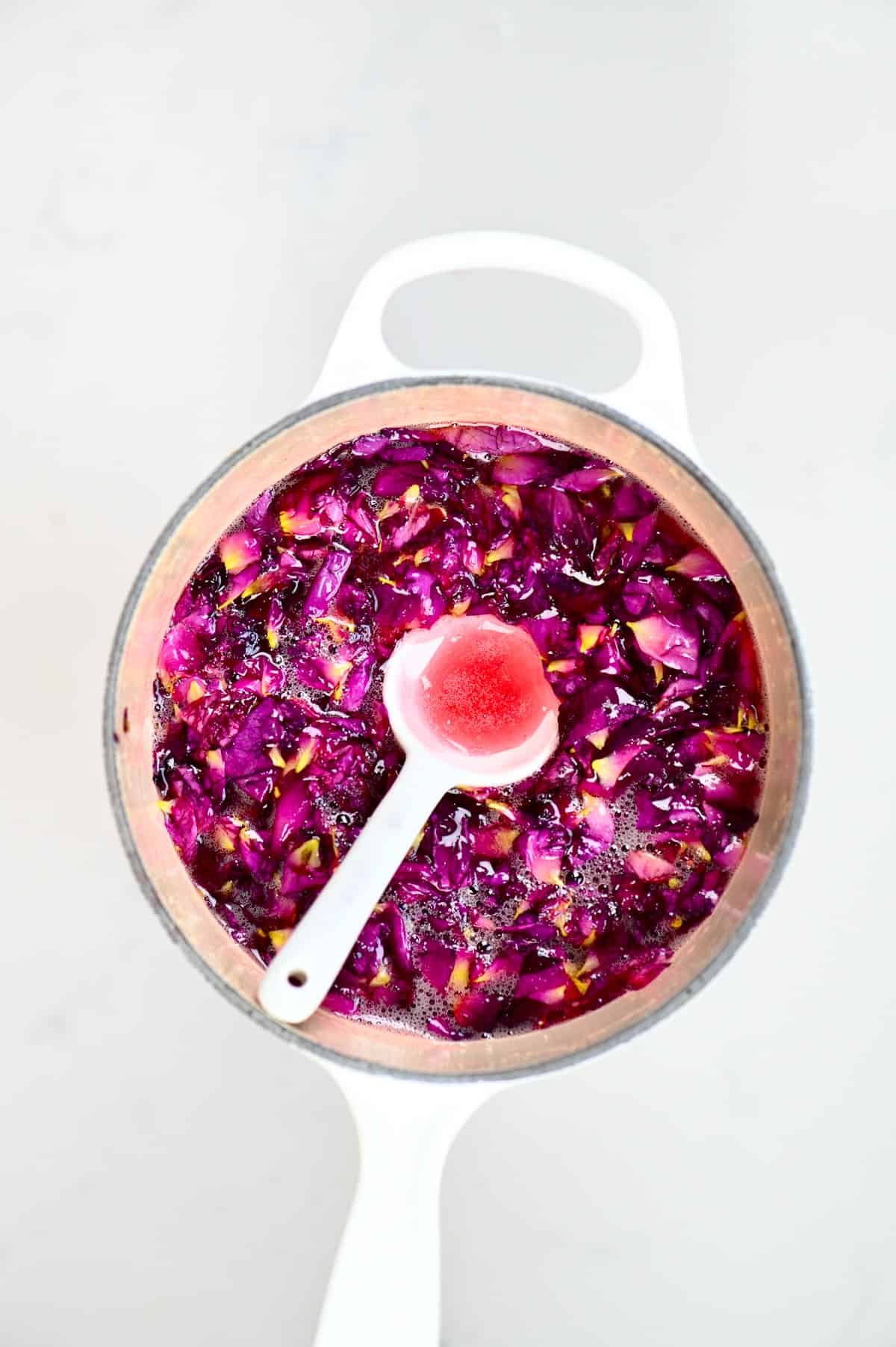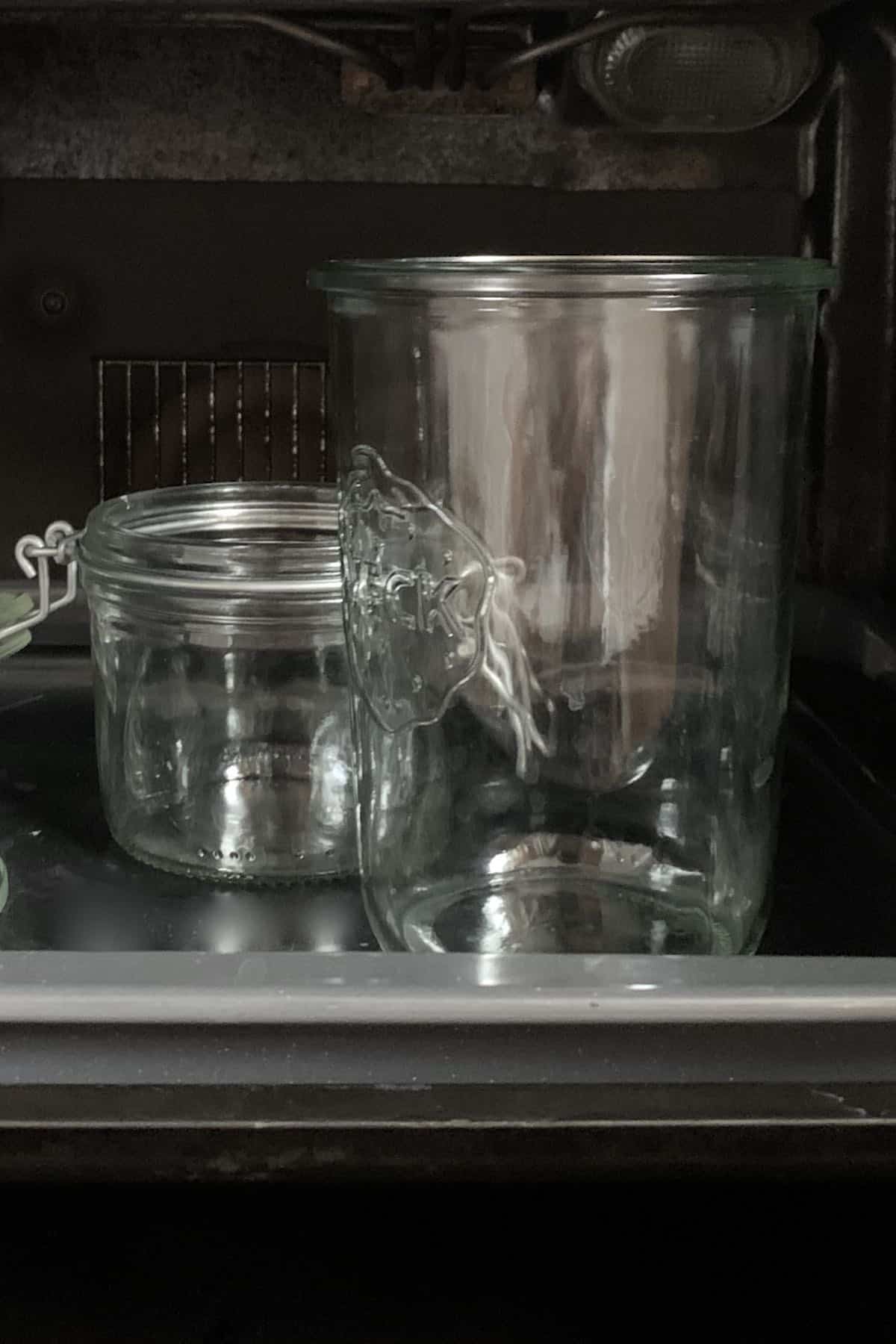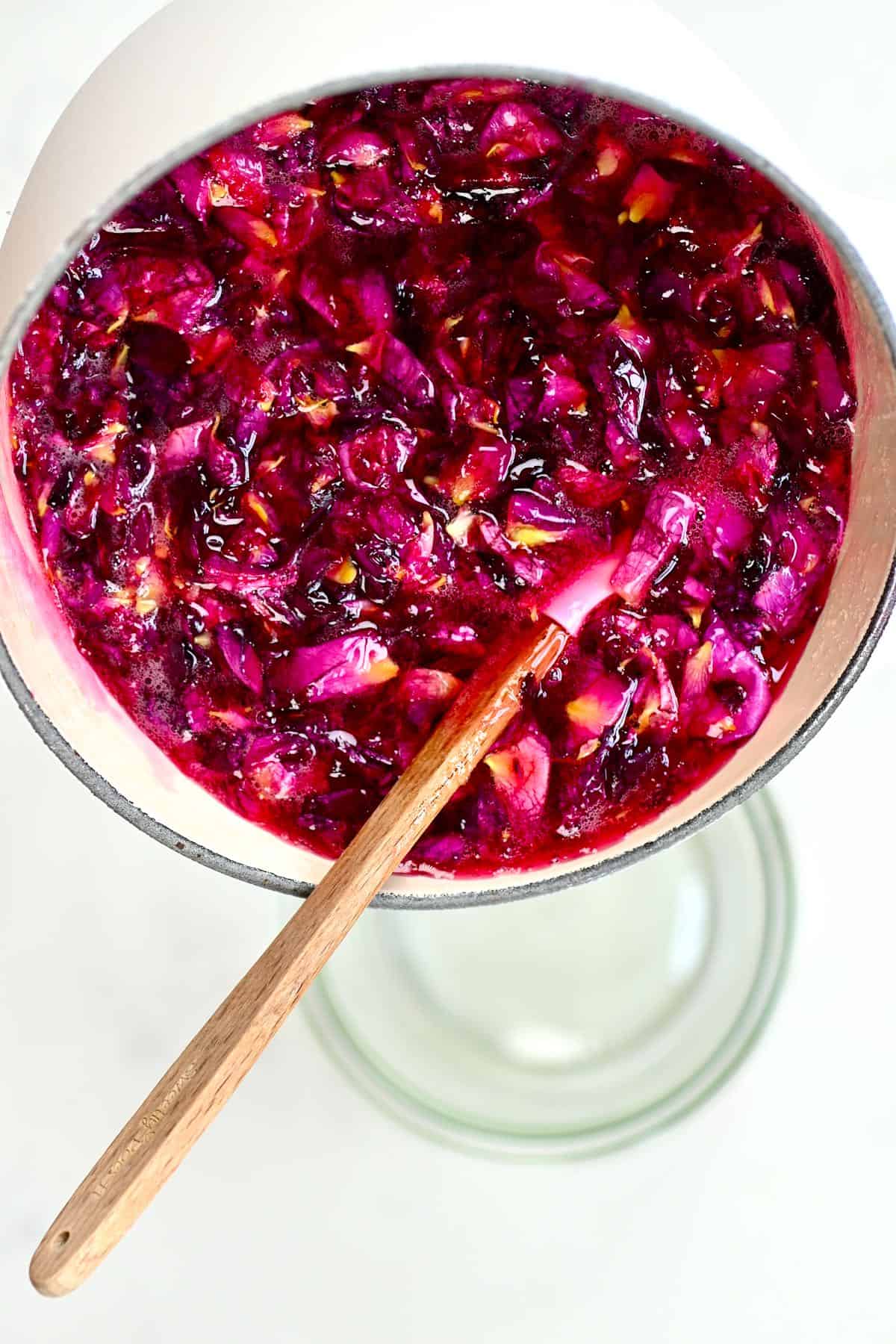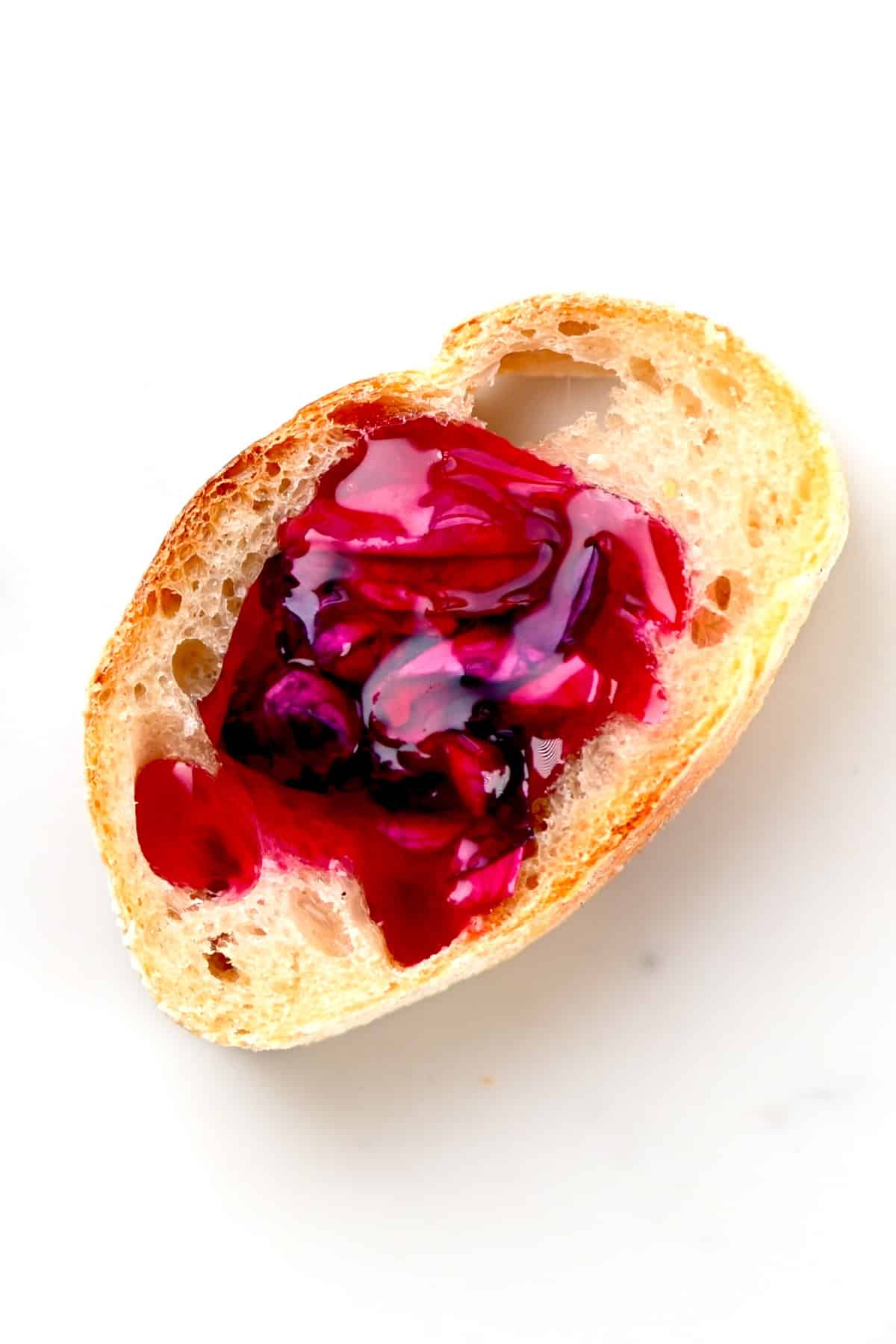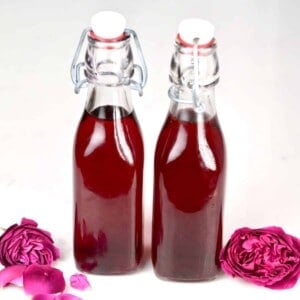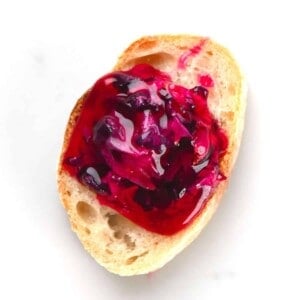The flavor of rose is one of my ultimate guilty pleasures, and not just because I’ve grown up consuming it a lot with delicious Lebanese sweets. I already have posts on my blog for homemade rose water and, more recently, rose extract. Now, here is a simple but sinfully delicious recipe for rose petal jam. As delicious as strawberry jam, raspberry jam, blackberry jam, fig jam, rhubarb jam, and other fruit jams are- this rose jam is my ultimate indulgence jam. The fragrant rose flavor is strong and sweet, without being overwhelming. I find it hard not to slather it over everything that I can. Plus, when all you need for this organic rose petal spread are four ingredients (water not included), a few simple tools, and 30 minutes of prep – it’s the perfect way to try something new and a simple step into the world of jam-making.
The ingredients
Sugar: For this particular recipe, I’ve decided to use cane sugar. However, you can experiment with other sugar types, too. Just be aware that different sugars will affect the flavor differently. It also affects the set and shelf life- so be wary when trying to reduce the amount I’ve suggested. Pectin: You can buy ‘jam sugar,’ which is a combination of white sugar mixed with pectin, or buy pectin on its’ own. I like to use separate pectin nd experiment with different sugar types. However, I’ve included a method for using jam sugar with this recipe too. Fragrant Organic Rose Petals: There are several types of edible roses that you can use that will all result in slightly different flavors and colors. It’s best to use roses with thin and/or more delicate petals so they end up soft, rather than chewy. Lemon Juice: Not only does lemon juice help the jam set (as it works to bond the pectin to the other ingredients), it also prevents bacteria growth, and works like magic on brightening up the color of the jam and petals, when using specific roses. Note* Bottled lemon juice has a consistent pH level, unlike raw lemons, so you can use it if preferred. However, I prefer to use fresh lemon juice.
Equipment needed
A Pan: Use a heavy-based large ad shallow pan rather that one that is tall and thin, for quicker and even cooking. Spatula or wooden spoon: Avoid using a metal spoon or plastic. Go for heat-proof wooden or silicone tools. Jam Jars: Especially needed if you plan to ‘can’ the jam for long-term storage. Otherwise, you need sturdy heat-proof jars with tight, airtight lids. Sieve or jelly bag (optional): If you want to remove some or all of the rose petals from the jam. Canning Funnel (optional): While not entirely necessary, especially if you aren’t canning the jam for long term storage, this tool does make transferring the jam into the jars much cleaner and easier.
How to make rose petal jam
Step 1: Prepare the roses by removing the petals and washing them well. Step 2: First combine the sugar and pectin in a bowl. Then, in a medium heavy-based pan, add the sugar pectin mix, water, and rose petals. Step 3: Heat the mixture over a low-medium heat stirring constantly, till the sugar is entirely dissolved. Don’t raise the temperature until it is dissolved, otherwise, you can end up with a grainy jam and/or the formation of sugar crystals. Note* Depending on what rose petals you use, they may leech the majority of their color during the initial cooking. Don’t panic though, this is temporary as the lemon juice works magic in brightening up the colors! Step 4: Add the lemon juice and then continue heat at a slightly higher temperature for a further 5-10 minutes (only stirring once or twice), allowing the mixture to begin thickening. Note: The “setting point” may vary depending on your pan and the size of the batch you’re preparing. You can check to see if the jam is set by placing a plate in the fridge/freezer to chill. To test the set, place a spoonful on the plate and leave for 30 seconds. When you press the jam, if it wrinkles (even a little), then it will set. Step 5: Remove from heat and allow the jam to cool slightly. Meanwhile, sterilize all of the jars/utensils you’ll be using to transfer and store the rose jam. To do this, wash everything with soapy water and then place it in the oven for about 10 minutes at 160ºC/325ºF to completely dry it. Step 6: Pour into sterilized jars, being careful not to touch the inside of the jar or lid during this step. Finally, seal the jars and your jam is ready! You can optionally water bath the jam too.
How to store
Without properly heat canning this rose jam/ rose jelly it will last in the fridge for up to two months or in the freezer for up to 6 months. You can also use a boiling water bath canner method (outlined in the recipe notes of my Blackberry Jam recipe) to properly store your jam for long-term storage. That way your jam will last around 1-1.5 years in a cool, dry, dark location.
Recipe notes
You can make this into a rose petal jelly by simply straining the petals out of the mixture before allowing it to set. The rose jelly is best for when you don’t want any additional texture from the petals in your dish. You can use dried rose petals too – about 1/3 cup of dried petals are equal to 1 cup fresh. If you end up with a jam that is too runny, this can be cooked again to thicken up either with more reducing or a little additional pectin. It’s always better to undercook rather than overcook. The more jam you make, the longer it will take to reach its setting point. Mine is a small-batch jam, so it didn’t take long at all.
How to serve
Alternatively, spread it over homemade croissants, French Toast, or protein pancakes. This rose jam also works well as a topping for desserts – such as over mango ice cream or inside these vegan magnum), and within creamy breakfast and dessert dishes like rice pudding or overnight oats. Of course, this also works well to spread over cakes, macarons, and even a spread for healthy banana bread. I love to spoon some into my yogurt bowls (using either natural yogurt, coconut yogurt, or almond yogurt).

